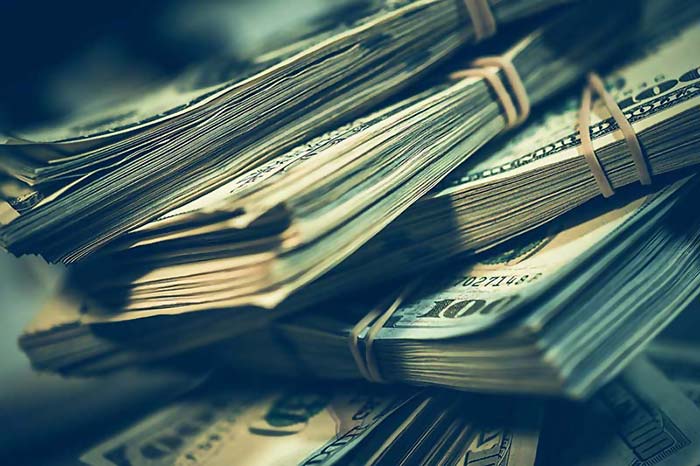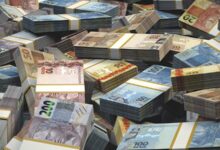Growth
The Brazilian economy is expected to grow 2.3% in 2024, according to the federal government’s estimate, which remains at the same level as in March, when the government had released the last macrofiscal bulletin. This projection is above the expectations of the financial market, which sees lower growth for the economy, of 1.30%, according to the Central Bank’s Focus report.
The difference between projections is, in part, due to uncertainty about the pace of recovery in economic activity after the Covid-19 pandemic, which severely affected the country in 2022 and 2023. In addition, there are political and fiscal factors that could compromise the confidence of economic agents and attraction of investments.
Among the challenges for growth in 2024 are:
- The necessity of fiscal adjustmentwith the containment of public spending and compliance with the spending ceiling, which limits the increase in expenses to the previous year’s inflation;
- A tax reformwhich has not yet been approved by Congress and which could bring significant changes to the burden and distribution of taxes in the country;
- A high inflationwhich reduces the population’s purchasing power and affects consumption, one of the main drivers of the economy;
- A volatile exchange ratewhich increases production and import costs, in addition to generating uncertainty for exporters and foreign investors;
- A high interest ratewhich makes credit more expensive and discourages productive investment;
- A high unemployment ratewhich affects the income and quality of life of millions of Brazilians;
- A low productivitywhich limits the economy’s long-term growth potential.
Opportunities for growth in 2024 include:
- Mass vaccination against Covid-19, which may allow the resumption of economic and social activities with greater safety and normality;
- The recovery of the world economy, which could favor Brazilian exports, especially commodities such as soybeans, iron ore and oil;
- The structural reform agenda, which can improve the business environment, competitiveness and efficiency of the Brazilian economy;
- The privatization and concessions agenda, which can attract private investments to strategic sectors, such as infrastructure, energy and sanitation;
- The innovation and digitalization agenda, which can boost the transformation and modernization of various segments of the economy, such as industry, commerce, services and agribusiness;
- The sustainability and social development agenda, which can generate business opportunities and productive inclusion, in addition to preserving the environment and the country’s natural resources.
Inflation
Inflation should remain at 3.3% in 2024, according to the federal government’s estimate, which is within the target established by the National Monetary Council (CMN), of 3%, with a tolerance margin of 1.5 percentage points upwards. or down. The financial market predicts inflation of 3.88% in 2024, slightly above the center of the target, according to the Central Bank’s Focus report.
Inflation is one of the main problems of the Brazilian economy in recent years, having exceeded the target ceiling in 2022 and 2023, with 5.79% and 4.86%, respectively.
The rise in prices was caused by several factors, such as:
- The devaluation of the real against the dollar, which made imported products and inputs for production more expensive;
- The rise in international commodity prices, which affected the costs of food, fuel and electricity;
- The pent-up demand for goods and services after the relaxation of social isolation measures;
- The restricted supply of some products and services, due to the effects of the pandemic on the production chain;
- Expansionary monetary policy, which reduced the basic interest rate to stimulate the economy.
To contain inflation and anchor market expectations, the Central Bank has been raising the basic interest rate, the Selic, since March 2023. The Selic is currently at 13.25% per year, after two consecutive reductions promoted by the Central Bank . The market expectation is that the Selic will end 2024 at 11.75% per year.
The interest rate is the main monetary policy instrument used by the Central Bank to control inflation. Increasing the interest rate means making credit more expensive and money more scarce, which reduces consumption and demand for goods and services. On the other hand, reducing the interest rate means making credit cheaper and money more abundant, which stimulates consumption and demand for goods and services.
Exchange

What to expect from the Brazilian exchange rate in relation to the Dollar in 2024?
The exchange rate is an economic variable that reflects the value of one currency in relation to another. It is influenced by several factors, both internal and external, that affect the supply and demand for foreign exchange in the market. In this post, we will analyze some of these factors and try to project what to expect from the Brazilian exchange rate in relation to the dollar in 2024.
One of the main factors that influence the exchange rate is inflation. Inflation is the general increase in the prices of goods and services in an economy. It reduces the purchasing power of the currency and, consequently, its attractiveness on the international market. This means that Brazil will have relatively high inflation in the coming years, which could depreciate the real against the dollar.
Another relevant factor is the interest rate. The interest rate is the cost of money in the financial market. It affects the profitability of investments and, therefore, the entry and exit of capital into the country. A higher interest rate tends to attract foreign investors, who seek a higher return, and to increase the value of the local currency. A lower interest rate, on the other hand, tends to stimulate consumption and domestic investment, but also discourages the flow of foreign capital and devalues the local currency. These values indicate that Brazil will have a high interest rate in the coming years, which could appreciate the real against the dollar.
A third factor that impacts the exchange rate is the trade scenario and global trade. The commercial scenario is the set of agreements, tariffs, barriers and policies that regulate the flow of goods and services between countries. Global trade is the volume and composition of commercial exchanges between countries. The commercial scenario and global trade affect the trade balance, which is the difference between a country’s exports and imports. A surplus trade balance, that is, with more exports than imports, generates an increase in the supply of foreign currency in the country, which can increase the value of the local currency. A deficit trade balance, that is, with more imports than exports, generates a decrease in the supply of foreign currency in the country, which can devalue the local currency. According to the Central Bank3, the projection for the Brazilian trade balance is a surplus of US$68 billion in 2022, US$60 billion in 2023 and US$55 billion in 2024. These values indicate that Brazil will have a positive trade balance in coming years, which could increase the value of the real against the dollar.
In addition to these factors, there are others that also influence the exchange rate, such as the political scenario, the confidence of economic agents, public debt, the fiscal situation, productivity, competitiveness, innovation, among others. All these factors interact with each other and form market expectations about the future behavior of the exchange rate.
Given this, it is difficult to make an accurate and unique forecast about the Brazilian exchange rate in relation to the dollar in 2024. According to the government’s estimate, the exchange rate should remain at R$5.20 per dollar in 2024, but this cannot be trusted. in that. However, based on available information and observed trends, we can estimate that the exchange rate will be around R$5.00 per dollar in 2024. This estimate takes into account that Brazil will have higher inflation than the United States, but also a higher interest rate, a surplus trade balance and a gradual economic recovery. This estimate also considers that there will be no external or internal shocks that could significantly alter the exchange rate scenario.
It is important to emphasize that this is only an estimate based on current data and is subject to change as new information is released and new events occur. Therefore, it is recommended to follow news and economic indicators to stay updated on the exchange rate and its prospects.







